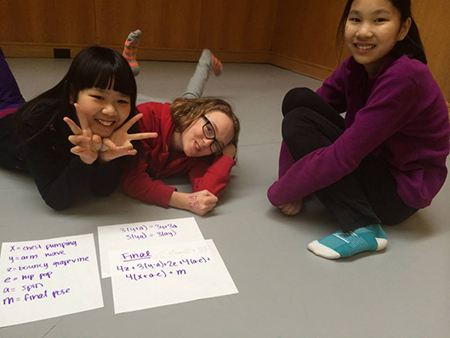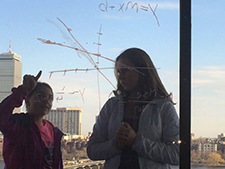Girls SHINE Dancing Hip Hop Variables
-
-
slice.mit.edu
Filed Under
Recommended

The event concluded SHINE’s eight-week dance and math enrichment program led by MIT student mentors. SHINE—which stands for Supporting, Harnessing, Inspiring, Nurturing, and Empowering—and its unique kinesthetic learning structure are gaining a lot of interest. The Boston Globe, FOX 25 News, and now CBS have featured them in the last month.
“Just giving your brain another way to understand information sometimes deepens your understanding,” explains MIT student and founder Kirin Sinha ’14.
Learning difficult choreography and grasping complex math concepts can also instill a level of confidence often lacking in girls of this age. “I can tell you from my own experience, being the only girl in so many math classes, math teams, and national competitions, that you need that confidence. And I personally got it from dance,” said Sinha in an interview with FOX 25 News.
The SHINE curriculum covers algebra, fractions, percentages, and planar geometry as well as dance. In one class, girls learn about variables in algebra equations by creating their own choreography equations: twirls equate to x’s and hip hops are y’s. MIT mentors jump in with adjustments to the equations and the girls dance the new choreography, beginning to grasp what a variable means and how it can be combined. “Because they danced it out, they understand the meaning of it,” said Sinha.

SHINE also adapts traditional games to reinforce math concepts. In another class, MIT mentors give the spots on a Twister board numerical values. Girls that draw a 0.5 must find the equivalent percentage or fraction on the board. Each week’s program includes dance lessons and time for girls to learn and practice new math problems. They often write up equations on the big glass windows of McCormick Hall Penthouse.
SHINE students report a near 300 percent improvement in mathematical scores over the course of the program and noticeable increases in self-confidence. Middle school teachers often observe SHINE girls raising their hands more and playing a more active role in class.
Sinha attributes her idea of putting together two seemingly different fields to the entrepreneurial, can-do philosophy she learned at MIT and nurtured through a Public Service Center Grant. “That’s the environment we try to create in SHINE for these girls… it’s a space to be innovative and creative and define yourself outside of what people might tell you.”
SHINE is expanding across the country. To start a branch in your area or get involved, visit www.shineforgirls.org.







